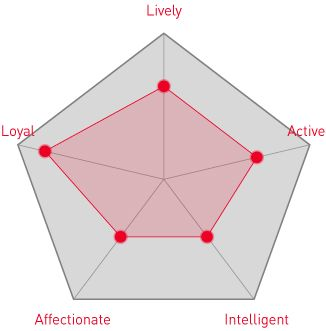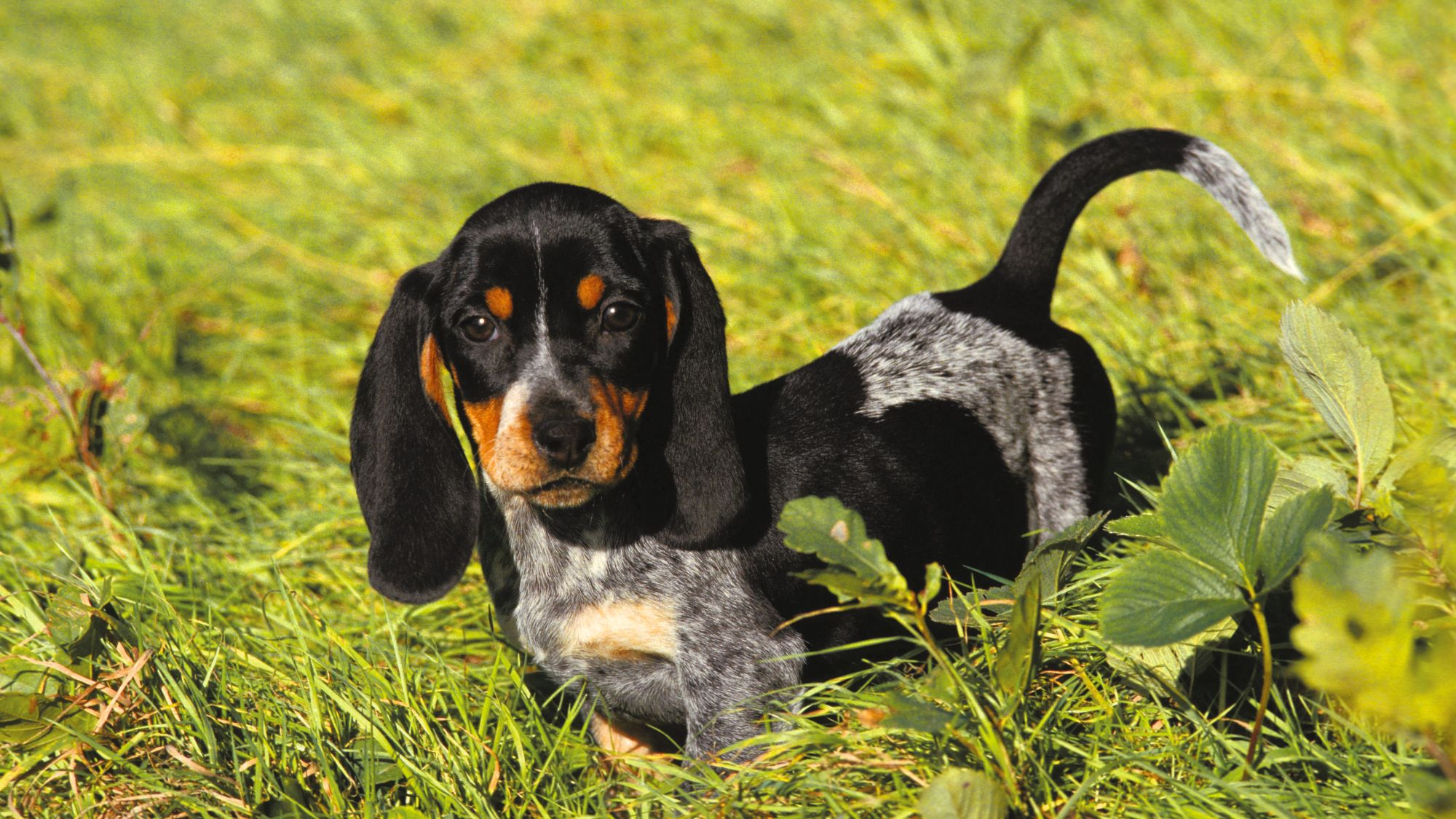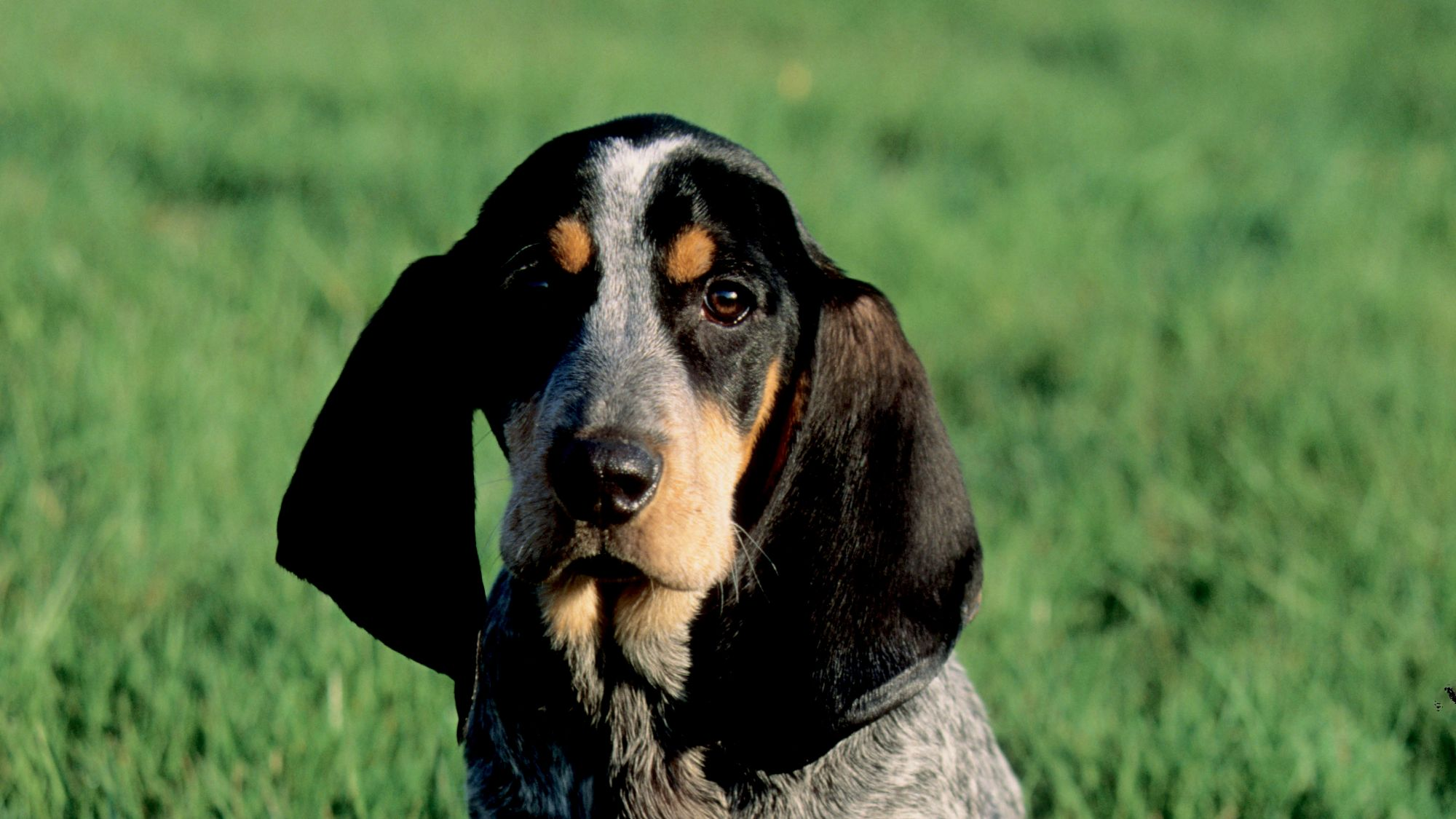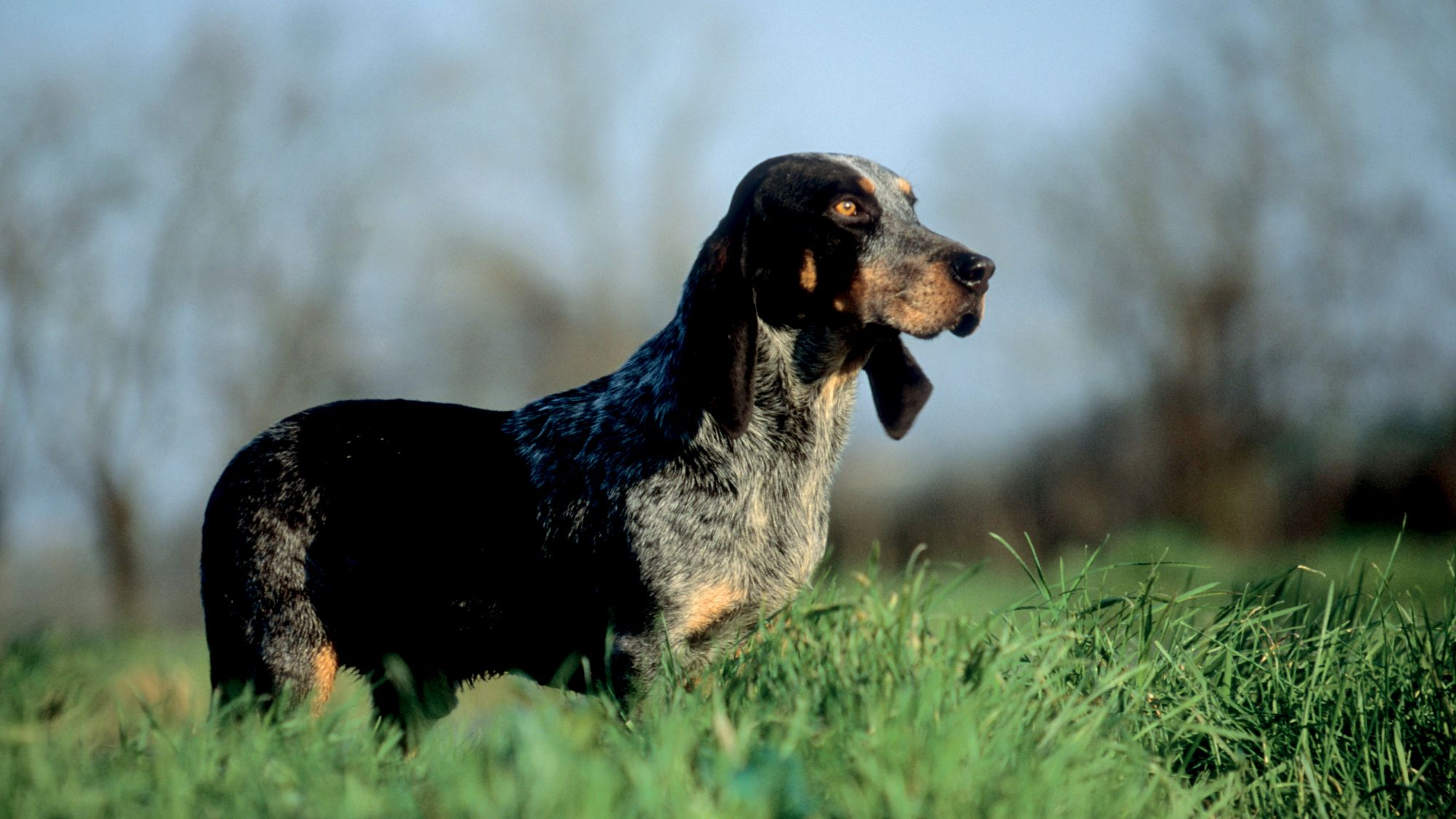
Let's talk Basset Bleu de Gascogne dogs
Never heard of the Basset Bleu de Gascogne? Not surprising as they’re a rare, French breed. At first sight, you may think this distinguished-looking dog enjoys a life of leisure. In fact, the Basset Bleu de Gascogne was bred as a hunting dog, related to the Basset Hound, and impresses with their agility, endurance and ability to pick up a scent. The Basset Bleu de Gascogne makes for an affectionate family pet, with a particular affinity for children, once trained. This active breed is pretty much up for anything.Official name: Basset Bleu de Gascogne
Other names: Blue Gascony Basset
Origins: France

| Drooling tendencies |
|
Warm weather? |  |
| Shedding level |  |
Suited to apartment living? |  |
| Energy level (high, low, medium) *: | Moderate | Family Pet?* |
 |
| Compatibility with other pets |  |
Can stay alone?* | 
|
* We advise against leaving pets alone for long stretches. Companionship can prevent emotional distress and destructive behaviour. Speak to your veterinarian for recommendations.
Every pet is different, even within a breed; this snapshot of this breed’s specifics should be taken as an indication.
For a happy, healthy and well-behaved pet, we recommend educating and socialising your pet as well as covering their basic welfare, social and behavioural needs.
Pets should never be left unsupervised with a child.
All domestic pets are sociable and prefer company. However, they can be taught to cope with solitude from an early age. Seek the advice of your veterinarian or trainer to help you do this.


| Baby age: | Birth to 2 months |
| Puppy age: | 2 to 12 months |
| Adult age: | 1 to 7 years |
| Mature age: | 7 to 10 years |
| Senior age: | From 10 years |

1/7
Get to know the Basset Bleu de Gascogne
All you need to know about the breed
The Basset Bleu de Gascogne is a small-sized dog, initially bred for hunting, with adorable droopy ears. A melancholic expression belies their true temperament, which is incredibly cheerful, with a desire to please their humans. Once trained, the Basset Bleu de Gascogne tends to make a great playmate for children, as well as other dogs (they have a pack mentality, after all). However, their prey drive will make other household pets, such as hamsters, too tempting. Sorry!
The Basset Bleu de Gascogne behaves quite differently, depending on whether they’re indoors or outdoors. Long walks or hikes, between 40 and 60 minutes per day, are ideal for keeping your Basset Bleu de Gascogne in top shape and great health. When outside, their hunting-dog roots means that they are happy to keep going until you say stop. Move inside, and your Basset Bleu de Gascogne will be content to settle down in their favourite quiet spot or even curl up with you for a nap, if you’re into that.
Speaking of life indoors, the Basset Bleu de Gascogne is a breed that does much better in a house with a fenced garden than an apartment where they may feel cooped up. They also have a musical bark, some may call it a howl, that you could grow fond of but the neighbours much less so ... Persistent training (and endless patience) will temper your Basset Bleu de Gascogne’s barking habit.
While the Basset Bleu de Gascogne is sweet by nature, they may not be the best choice for first-time owners. Due to their independent streak and their sensitive nose, which easily distracts them, the Basset Bleu needs a human who can dedicate time and patience to properly training them. It pays off in spades.

2/7
2 facts about Basset Bleu de Gascogne dogs
1. Under the radar
The Basset Bleu de Gascogne is a rare breed within France. They were only recognised by the United Kennel Club in 1991, and are not yet recognised by the American Kennel Club. This means that finding a Basset Bleu de Gascogne outside of France is practically impossible, so try not to get your hopes up.
2. Mistaken identity
The Basset Bleu de Gascogne is often confused with their canine cousin, the Basset Hound. While the two breeds share many physical and character traits, the easiest way to tell them apart is their coat colour. The Basset Bleu de Gascogne’s coat is black, on top of a white coat. The blue colour effect comes from the black mottling and ticking. Whereas the Basset Hound’s coat tends to be a mix of black, tan and white.
History of the breed
Dogs with a blue-tinged coat were first recorded in 12th century France. The Basset Bleu de Gascogne’s ancestors were bigger in size and bred to hunt serious animals like wild boar and deer. The Basset Bleu de Gascogne was bred to be smaller, most notably from the Grand Bleu de Gascogne, to hunt smaller animals, like rabbits.
After becoming popular following the French Revolution, when common French folk could legally own hunting dogs, the breed almost faced extinction at the turn of the 1900s. Thankfully the Frenchman Alain Bourbon, who was an ardent fan of the Basset Bleu de Gacogne, came to the rescue and saved the breed from disappearing.
Today, the Basset Bleu de Gascogne is one of six “basset” breeds to exist in France, and one of five that remain quite rare, the exception being the Basset Hound. The United Kennel Club would not officially recognise the breed until 1991 and they still have not been registered by the American Kennel Club. This is a cheerful and sweet-tempered canine who still remains rare, but at least the Basset Bleu de Gascogne breed has a notable presence – and fanbase – in their home country.

4/7
From head to tail
Physical characteristics of Basset Bleu de Gascogne dogs
1. Ears
Long, fine ears that reach the nose with a pointed tip.
2. Eyes
Oval-shaped eyes with a melancholic expression.
3. Body
Back is long, with rounded ribs and a broad chest.
4. Coat
Short and thick coat with blue-coloured effect.
5. Tail
Thick tail that sits high on the rump and curves upward.

5/7
Things to look out for
From specific breed traits to a general health overview, here are some interesting facts about your Basset Bleu de Gascogne

6/7
Caring for your Basset Bleu de Gascogne
Grooming, training and exercise tips
Thanks to their short, impenetrable coat, grooming your Basset Bleu de Gascogne requires just one weekly brush. This is a breed with a proper dog odour, due to excess oil production, so be prepared for frequent bathing sessions! Special shampoos do exist, as well as wipes that can help maintain the skin flora, but they tend to be prescription-only. Clean those floppy ears weekly to avoid wax and dirt build-ups and trim nails weekly or fortnightly.When it comes to exercising your Basset Bleu de Gascogne, they need at least 45 minutes outside per day. As a hunting breed, they particularly enjoy the countryside and all the scents it offers. Keep them on leash or you risk losing them once they catch a scent. Swimming, running, walking and jumping are fantastic activities for your Basset Bleu de Gascogne.
But this is not the dog to chase after a ball or run next to you. The Basset Bleu de Gascogne is far too independent for that, which makes them a little tricky to train ... but not impossible. Patience and persistence are required with this breed, so a confident owner is a must.
7/7
All about Basset Bleu de Gascogne dogs
We could say that the Basset Bleu de Gascogne enjoys the sound of their own voice, a deep bark, which could be a bit of a headache for you, literally. A house in the countryside will allow you to remain on good terms with your neighbours, who are less likely to hear them than in an apartment. Persistent training (and endless patience) will temper your Basset Bleu de Gascogne’s barking habit.
The Basset Bleu de Gascogne is an affectionate breed with a sweet temperament. They’re open to pretty much anyone but especially to their human family. Depending on the boundaries you set, your Basset Blue de Gascogne may become a lap dog, curl up beside you or join you in the bed at night, if that is allowed chez vous. Although you may have to wrestle the bedcovers off of them!
translations.feature.breeds.otherbreeds
Read more on this topic

How your dog's nutrition needs change with age

How to adopt a dog

Things to consider before getting a dog
Sources
1 - Veterinary Centers of America https://vcahospitals.com/
2 - Royal Canin Dog Encyclopaedia. Ed 2010 and 2020
3 - Banfield Pet Hospital https://www.banfield.com/
4 - Royal Canin BHN Product Book
5 - American Kennel Club https://www.akc.org/


